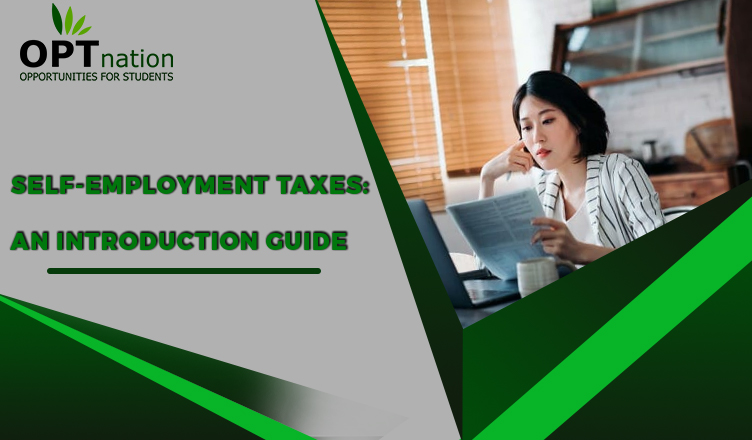Once you decide to take the plunge and become a small business owner, you’ll find that filing your taxes isn’t easy. Gone are the days of simple W-2 employee forms and an automatic refund. Now, you need to collect invoices, save business receipts, and balance your books.
What are Self-Employment Taxes?
Self-employment taxes are taxes paid to the IRS by small business owners who are self-employed. This includes sole proprietors, independent contractors, and those who operate a business as a side hustle. Partnerships and corporations may pay different tax rates.
The taxes are composed of Social Security and Medicare taxes, which are assessed at a rate of 15.3%. This article will give you an introduction to self-employment taxes and how it works.
How Do Self-Employment Taxes Work?
When you are employed by someone else, your employer pays half of your Social Security and Medicare tax burden on your behalf. But, when you are self-employed, you are responsible for the full 15.3% plus income tax. There are 7 income tax brackets, with 10% being the lowest.
This can add up quickly, so it’s essential to understand how to calculate and pay these taxes.
How Are Self-Employment Taxes Calculated?
Self-employment taxes are calculated on the net profit of your business. Net profit is the total amount of income you receive minus any business expenses you incur. This includes any expenses related to supplies, equipment, travel, advertising, and other business costs.
Keep in mind that these costs are only subtracted if you use deductions, which we’ll discuss later. Once you have calculated your net profit, you can use the IRS’s Self-Employment Tax Center to determine the amount of taxes you owe and how to pay them.
How do you Pay Your Self-Employment Taxes?
The way you pay your self-employment taxes depends on your business entity. Most self-employed individuals are sole proprietors. If you haven’t declared yourself as another business entity, you’re a sole proprietor and must report your income on a Schedule C.
You have to file an income tax return if your net earnings from self-employment are $400 or more. This is true if you’re an LLC (a corporation), a C-corporation, or S-corporation. With that said, C-corps and S-corps are recognized as separate tax-paying entities for federal taxes.
It’s a good idea to get a tax ID number (it’s free) because it allows you to fill out a W-9. A W-9 helps businesses and clients prepare a 1099 form, which they then send to you and the IRS.
People who are self-employed do not have to fill out a 1099 form. Instead, they can check the information on the 1099 form to ensure it matches up with their own tax information. If they don’t match, self-employed individuals must contact their clients immediately to fix the discrepancy.
When Do You Need to Pay Self-Employment Taxes?
If you expect your tax burden from your self-employed income to be lower than $1,000, then you can file your taxes before April 15th. If you expect it’ll be higher than $1,000, you must pay quarterly taxes. You’re required to make 4 payments a year using Form 1040-ES.
The deadline for each quarter is typically the 15th day of the month following the end of the quarter. For example, if the quarter ends on March 31st, you’ll need to make your payment by April 15th. The estimated amount is usually a quarter of your last year’s tax burden.
For example, if you paid $10,000 total in taxes, you would pay $2,500 each quarter. If this is your first time paying quarterly taxes, you’ll need to use another calculation on the IRS site.
How Can You Reduce Your Self-Employment Tax Liability?
The best way to reduce your self-employment tax liability is to take advantage of any deductions you may be eligible for. The IRS allows business owners to deduct certain business expenses, such as office supplies, advertising, utilities, rent, insurance premiums, and travel expenses.
Additionally, you may be able to deduct health insurance premiums, retirement plan contributions, and other expenses, including gas mileage used for business-specific travel.
Remember that you must still file taxes on a W-2 if you work as an employee. You can use a website like Form Pros for instant W-2 form creation and to fill out the said document. Remember to keep your W-2 and Schedule C income separate.
How Do You Get Ready for Tax Season?
It’s recommended to create a file folder on your desktop to store all necessary tax information, including invoices, receipts, and deductions. If possible, do your bookkeeping once a month. This prevents overwhelm and last-minute calculations, which could cause more mistakes.
Finally, keep at least 30% of your income for taxes in a separate savings account. You won’t have an employer to deduct your taxes for you, so you need to stay on top of that yourself.
Self-employment taxes can be a bit of a headache, but with a bit of knowledge and preparation, you can make sure you’re paying the right amount of taxes. Use this guide as a starting point, but always consult a self-employed tax professional for more detailed US taxation advice.

